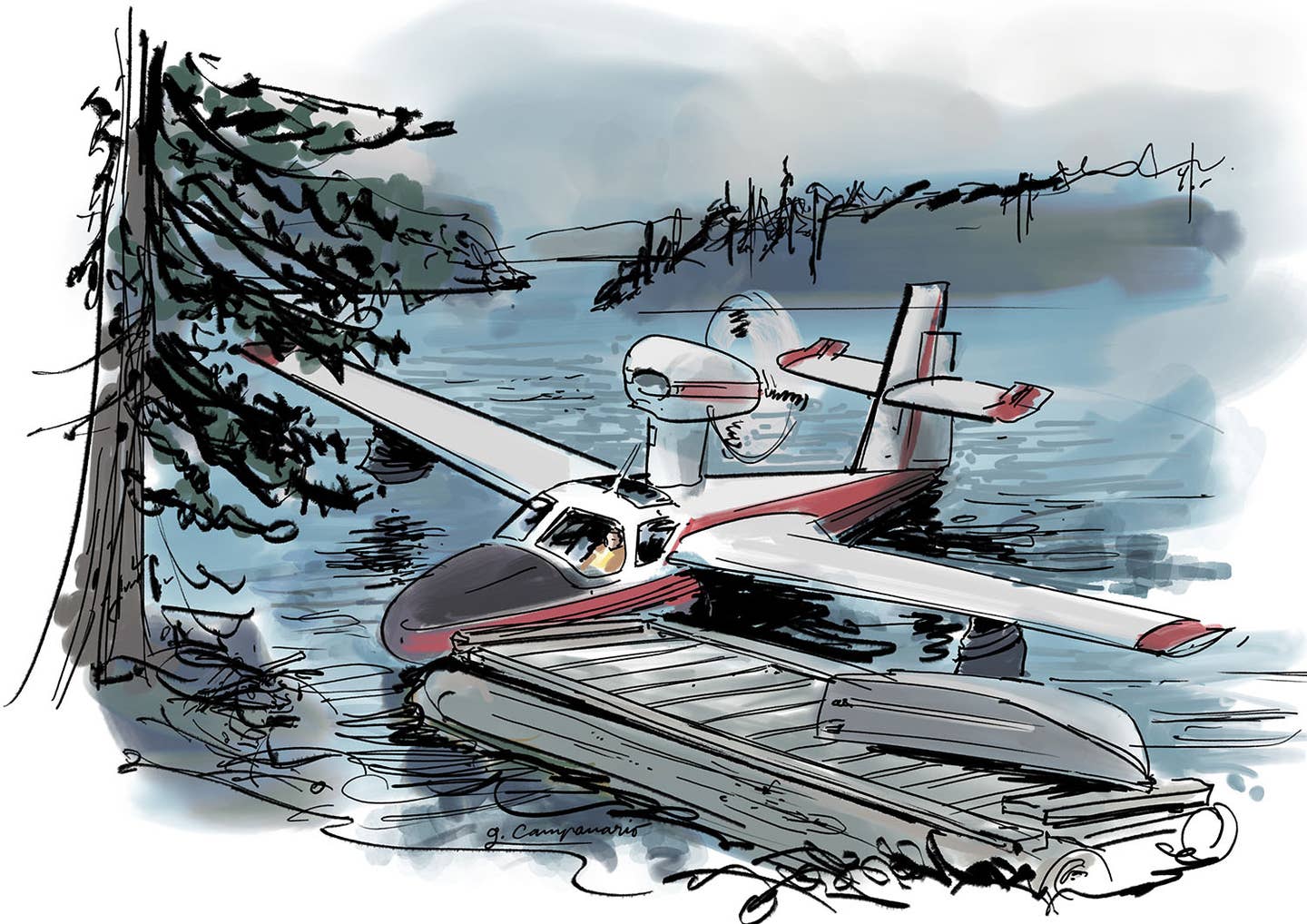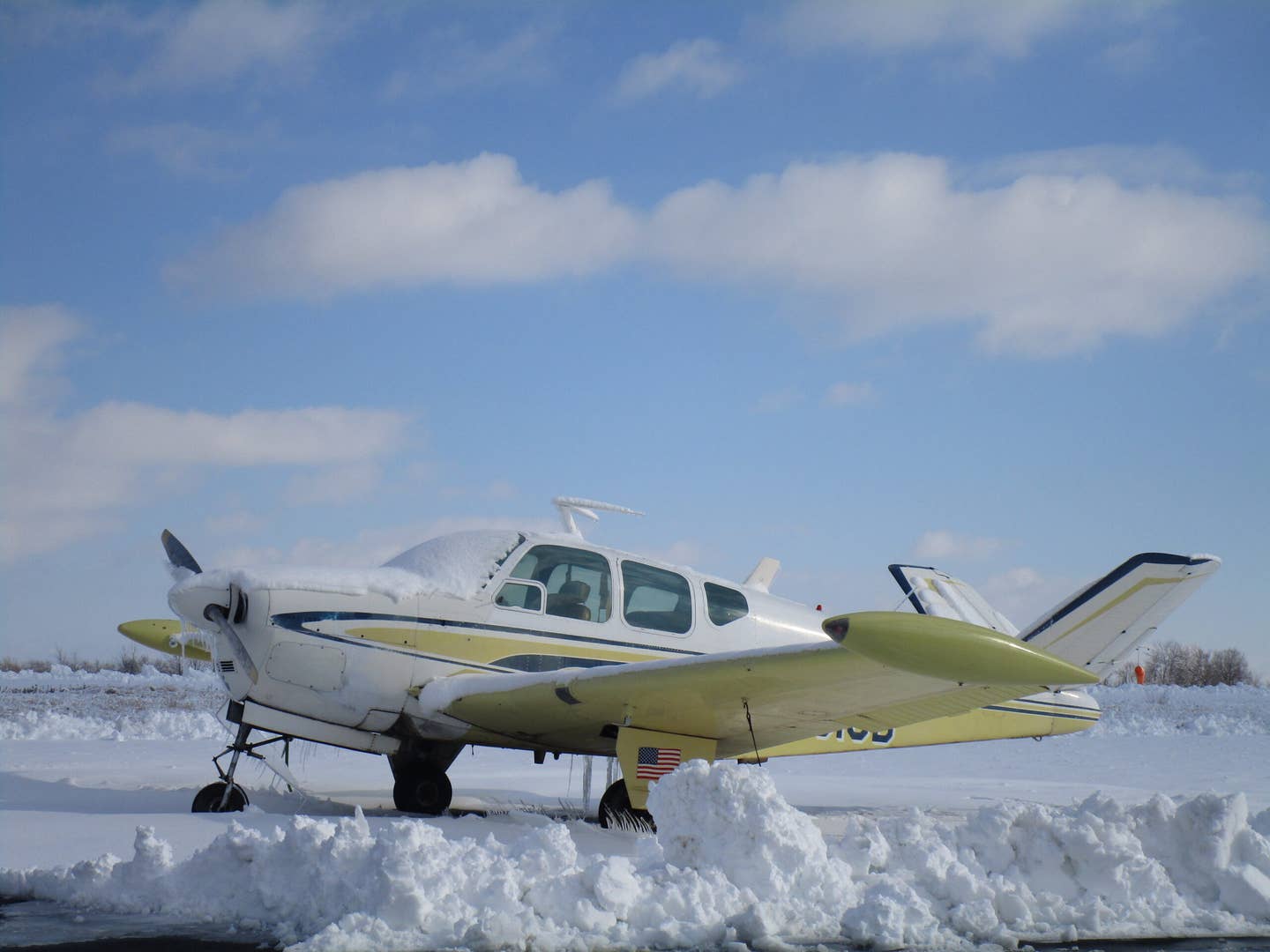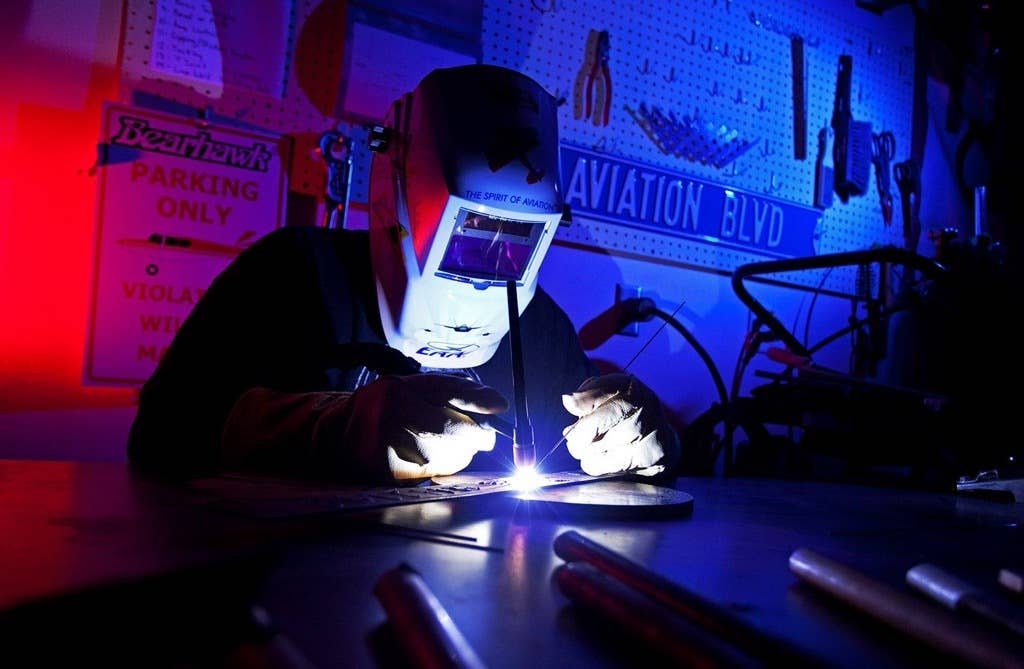Lessons Learned: A Seaplane Pilot‘s Wilderness Fishing Flight Gets Weathered In
A Lake Amphibian, 25-pound steelhead, and a deluge lead to high drama for a pilot and his friends.

Illustration by Gabriel Campanario
On a rainy Saturday in June 1977, I flew my Lake flying boat from the Fraser river seaplane ramp, adjacent to Vancouver International Airport (YVR), to a remote steelhead river on the west coast of Canada's Vancouver Island. The river flows out of Toquart Lake just 250 feet above sea level and a couple of miles inland from the sea.
A warm front was moving in fast, bringing rain, dropping the ceiling and reducing visibility. I told my fishermen friends, Bob and Mike, that we might not be able to get into the lake, and if we were able to land, we might not be able to fly out at the end of the day if the system didn't move through by then. "That's okay," Bob said, "as long as we will be catching 25-pound steelhead while we wait." So, I filed a VFR Flight Plan to Toquart Lake specifying an 8 p.m. return to YVR. I knew the heavy rain would make it easy for large steelhead to swim up river to the spawning pools about a mile from the sea.
I had flown in several times the year before and had great success fishing the outlet stream for 25-pound summer steelhead. I needed at least a 1,000-foot ceiling to make the VFR flight through low passes on the eastern side of Vancouver Island to Port Alberni and then down the Port Alberni Inlet to the Pacific Ocean and Toquart Bay on the western side of the island. A 1,000-foot ceiling would allow me to fly up the river flowing out of Toquart Lake and then, by hugging the steep, mountainous southern shore of the lake, circle to land into the wind, facing back out to the sea, with the option of aborting the landing and flying back out to sea.
That morning, however, when I arrived over Toquart Bay, the ceiling had dropped to 600 feet. Barely enough to clear the 275-foot Douglas fir growth along the banks of the Toquart River. Much too low to use the circling to land approach and requiring a down-wind straight-in "must-land" approach from the sea. I only had a few seconds to decide as we approached the river flowing into the bay. As the river came into view, I could see over the trees and all the way to the end of the lake, so I decided to go for the straight-in downwind landing. The wind was light, and we touched down with 1,000 feet to spare and right in front of the cabin where I planned to remain overnight if we got weathered in.
The cabin was cleverly built on 12-foot wooden pilings. The combined height of the pilings and the fact that they were based 20 feet up the rocky slope from the shoreline positioned the floor of the cabin 32 feet above the lake's average level. It provided a good margin of safety from the heavy west coast storms that could easily raise the level of the lake 1 foot per hour during heavy rains, as the lake was a virtual bowl surrounded by mountain streams.
We taxied back to the lake's outlet, tied the plane to shoreline trees and walked downstream to the fabulous steelhead fishing holes. As we struggled to work our way downstream in our slippery waders along the rocky trail, we watched the ceiling drop to 400 feet, sealing off the landing approach over the stream we had just flown over to get in.
Good news: There would be no competition from other fly-in anglers, and the stream was flowing high and fast---just what the steelhead needed to swim upstream from the sea---and the pools were filled with fish. Bad news: It was pouring with rain, and the fast-flowing stream made wading very dangerous.
Good news: We returned to the plane safely with six 25-pound steelhead.
Bad news: By the time we taxied back to the cabin, the lake had risen 9 feet, and the makeshift dock was tugging at its mooring lines. They had to be immediately reset to allow the dock to stay afloat on the rising water.
There was no way we were going to be able to fly out of the lake and back to Vancouver, and we needed to let YVR flight service know that we were okay but not returning today.
No satellite messaging devices back in 1977, but I had installed a CB radio in my Lake flying boat to communicate with marine traffic along the coast for distress rescue calls, and it came in handy that day:
"Iron Goose calling any ship in Toquart Bay on channel 9."
"Iron Goose, this is the fishing vessel Nara reading Iron Goose on 9."
"Nara from Iron Goose---we are a Lake flying boat aircraft CF-HYZ weathered in at Toquart Lake and need to contact Vancouver Flight Service to cancel our Flight Plan from Toquart Lake back to Vancouver by 8 p.m. tonight ---can you relay our message?"
"Nara to Iron Goose on 9---yes, we can relay message. Is all okay otherwise?"
"Yes---all is okay, we are going to remain overnight in a cabin on Toquart Lake and fly out when the weather clears tomorrow---thanks for your help."
We arrived at the cabin's dock just in time to adjust the lines allowing it to rise with the lake level. By the time we tied the plane to the repositioned dock and unloaded and carried our overnight gear up to the cabin, the dock moorings were tightening up against the rising lake level and had to be reset again. Then, after dinner, we noticed the lake level was continuing to rise and was now covering the bottom of the cabin's supporting pilings (20 feet above the normal lake level and rising fast). It continued to pour with rain all night, causing the water to come closer and closer to the floor of the cabin. We had to get up every two hours during the night to adjust the dock's mooring lines using our headlamps and a small boat tied to the dock that was constantly filling with rainwater. One side of the dock was secured to the cabin, and the other had to be retied to branches by climbing higher and higher up a very slippery tree growing out of the rocky shore about 40 feet upwind.
At first light on Sunday morning, the water had risen to within a foot of the floor of the cabin. So, after hastily cooking a hearty pancake breakfast on the cozy wood stove that had kept the cabin warm during the harrowing night, we loaded the plane---very easy since we could float dock and plane right up to the cabin door. The rain had finally subsided, so, hoping that our CB message had been relayed to Vancouver flight service by the Nara fishing boat, we were ready to go. But not so fast!
The flooding had dislodged hundreds of large branches from the entire circumference of the lake, and they were now floating all over the surface of the lake. Once we were ready for takeoff, I had to use a plow taxi (lots of power with the nose held high) back and forth several times to create a wake that moved the branches, creating a narrow takeoff path clear of debris.
The flight back to Vancouver was a wet one, with lots of fog and drizzle, but we were happy to be headed home with a cooler full of large steelhead and the rainy weekend problems behind us, or so we thought.
When I attempted to contact the Vancouver tower for clearance to land in the Fraser river seaplane landing zone adjacent to the airport, there was no response. I should've used the CB radio, hoping that the tower was monitoring the emergency CB channel 9 frequency, but I decided to just try and slip in low and unnoticed. An airport security car was waiting for us at the seaplane ramp with a message to call the tower immediately!
Turns out the moisture from 24 hours of heavy rain had disabled the old Narco's com radio receiver, but the transmitter was still working, and I had been transmitting over the tower frequency and blocking their communication with jets landing and taking off from YVR international airport's active runway. They weren't happy about this, and after a good verbal rebuke, they placed a "never do this again" letter in my Canadian License file, but no fine or license suspension---thankfully!
This all happened back in 1977. Today, using the amazing Spot or Garmin satellite messaging devices, we could easily send Vancouver Search and Rescue and even our family members text message updates on our predicament. If I were still flying in the BC wilderness today, I would never be without one of these lifesaving devices and/or a satellite telephone. A handheld backup aviation radio with fresh batteries would also always be in my cockpit.
One thing wouldn't change. In the back of the plane, if our luck was still good after all those years, would be a cooler full of steelhead.

Subscribe to Our Newsletter
Get the latest Plane & Pilot Magazine stories delivered directly to your inbox






